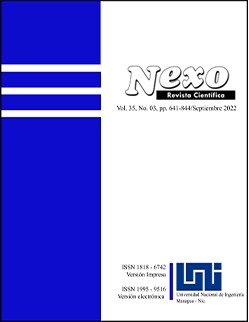ERP System and Hidden Cost in the Civil Construction Sector
DOI:
https://doi.org/10.5377/nexo.v35i03.15010Keywords:
hidden costs, ERP systems, organizational culture, civil constructionAbstract
This study aims to understand how ERP users see their role and interpersonal relationships to avoid hidden costs linked to its misuse. In order to understand the actors that are part of the functional network as users of ERP system, the study was carried out in a case study exploratory qualitative approach considering both the lack of similar previous studies in the literature and the understanding of the company in its own context. The process of data collection considered categories regarding organizational culture and hidden costs. The study used primary and secondary evidence for data triangulation. After organization and transcription of the collected material, content analysis was applied as data analysis technique on them. The investigated company proved to be positive for all the cultural characteristics analyzed, although it still presents dysfunctions in its activities. It was concluded that excluding situations with perfect system and actors, all organizations are subject to hidden costs. The observation of these can operationally, competitively and financially boost the organization, it is up to the manager to choose whether or not to pay attention to the “iceberg” in his direction. The research presents practical contributions to companies of the civil construction and also provides academic contribution by addressing the issue of costs information systems through a theoretical perspective from organizational culture.
Downloads
1480
Downloads
Published
How to Cite
Issue
Section
License
Copyright (c) 2022 Universidad Nacional de Ingeniería

This work is licensed under a Creative Commons Attribution 4.0 International License.
The authors who publish in Nexo Scientific Journal agree to the following terms:
- Authors retain the copyright and grant the journal the right of the first publication under the license Creative Commons Attribution License, which allows others to share the work with a recognition of the authorship of the work and the initial publication in Nexo Scientific Journal.
- Authors may separately establish additional agreements for the non-exclusive distribution of the version of the work published in the journal (for example, in an institutional repository or a book), with the recognition of the initial publication in Nexo Scientific Journal.
- Authors are allowed and encouraged to disseminate their works electronically (for example, in institutional repositories or in their own website) before and during the submission process, as it can lead to productive exchanges, as well as earlier and greater citation of published works.










